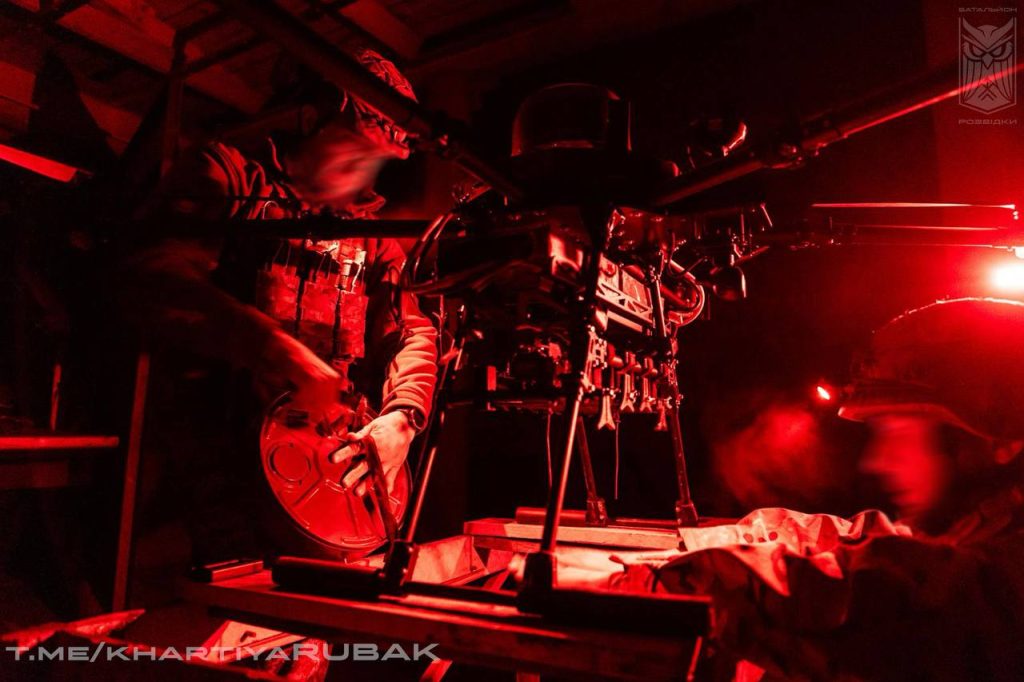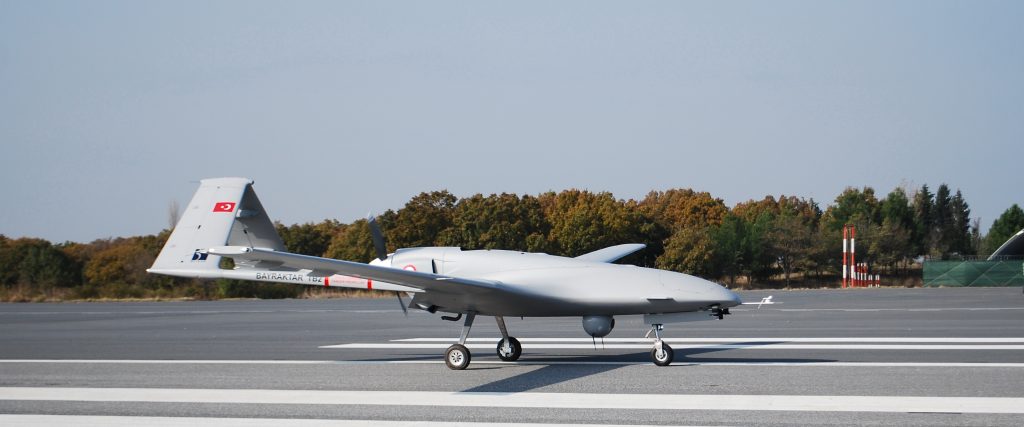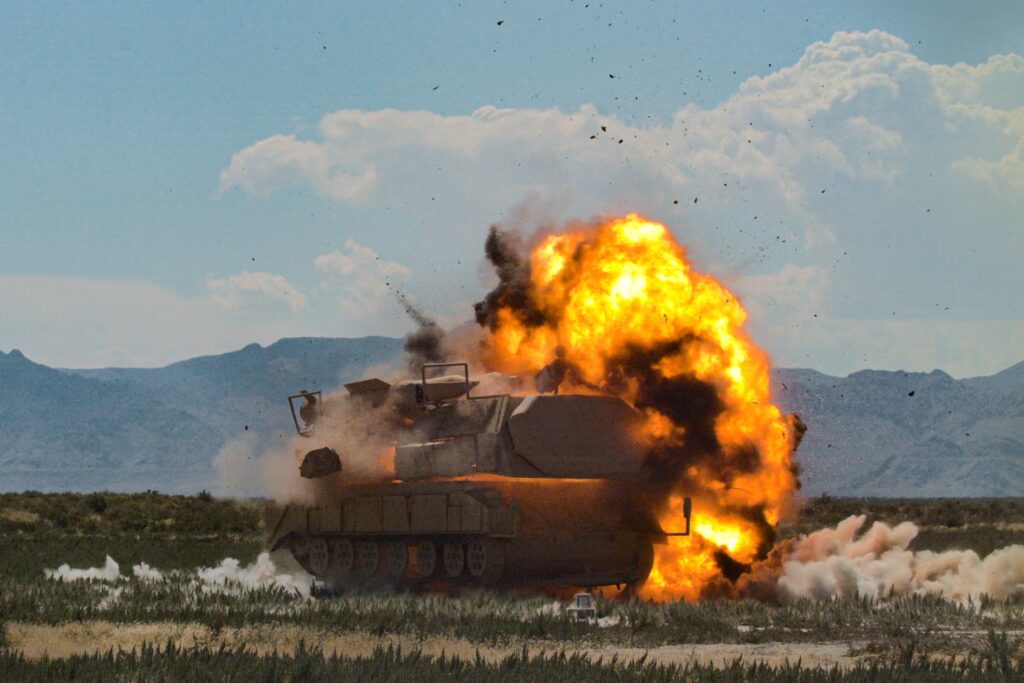Artillery vs strike drones
This article is taken from the latest Calibre Defence newsletter. It looks at the role of artillery and strike drones on the modern battlefield and examines the role of both in balance. If you like this article, please do consider signing up for the newsletter on the Calibre Defence homepage. Your support means a lot to me and the Calibre project.
In 2020 a haunting series of videos began to fill people’s social media timelines as Azerbaijan’s MoD began publishing its videos of drone strikes in the 2020 Nagorno-Karabakh war. The Bayraktar TB2s seemed to range freely, striking targets deep in the Armenian rear including air defence systems, as well as frontline trenches. Here, it seemed, was a true game changer, a war-winning capability. With interest, many watched the same social media feeds at the start of Russia’s 2022 invasion for videos of Ukraine’s own TB2s. A few did emerge, as did similar videos from Russia’s Orion reconnaissance strike drone, but all too soon those videos disappeared. As many expected, the air defence systems used by both forces had quickly brought those drones down, making their further use unwise in all but the most permissive environments.
Adaptation continued regardless and Russia began supplementing its massive artillery park with the Lancet-3 loitering munitions. Ukraine turned to a mixture of heavy bomber drones as well as FPVs and loitering munitions to fight back. The convenient video that these systems produce through the way they are guided are once more a defining feature of social media timelines leading some to some claims that these weapons are the future and that conventional systems like artillery are dead. What’s the truth here? How should we see these systems – are they in competition with each other, or complementary? That’s the topic that we are covering in the March newsletter.
The right tool for the job

A Ukrainian soldier prepares a Vampire heavy bomber drone for an operation. Credit: Ukrainian MoD.
I’ll be clear from the outset – drones are not a silver bullet. In Ukraine they are an effective response to a desperate situation. In Nagorno-Karabakh they were a part of a layered and very effective combined arms force that included some best-in-class electronic warfare that allowed them to fly so freely. Over Africa and the Middle East, large drones are routinely shot-down by state and non-state actors. In Ukraine, the failure rate of FPVs is very high, and Ukraine was losing 10,000 drones per month to Russian action in 2023. They are fragile systems that can be adapted to with the right approach and tools.
That is not to say that drones are all bad. They can provide a relatively cost-effective precision strike capability that can be deployed by countries without all of the trappings of a high-end NATO force like space-based reconnaissance and air-land integration. They also offer organic precision strike to tactical forces, which is key and we will return to this point later.
The reason for this is best approached with an understanding of what artillery is designed to do, so we can see that drones cannot answer those questions. Artillery has three primary roles, to destroy enemy equipment and forces, neutralise them, or suppress them. These missions are often connected but face certain limitations. The first is that artillery is an “area effect weapon,” what this means in practice is that it is very unlikely to hit a target on the head. A battery of guns firing on a trench system will produce a beaten zone that is approximately cigar-shaped around the trench; some shells will land in or very near the trench, but most will land around it.
You can see this for yourself the next time you are on a beach. Take a handful of stones and throw them one at a time at a given area, some will be pretty accurate, but some will go somewhere else altogether. This is how artillery fire support works.
Generally speaking, an adversary will not want to receive artillery fire, so they will quickly seek out cover once it begins. This gives an artillery battery a window to achieve a destructive effect – it is measured in seconds, maybe two minutes. The result is that for artillery to cause casualties to infantry and vehicles, it has to deliver as much ammunition onto a target in the shortest time possible. Causing the crew of a gun to disperse, however, may be sufficient to achieve ‘neutralisation.’
After that it switches to suppression, which is intended to stop those infantry and vehicles from re-emerging to carry on their duties. This is typically a lower rate of fire with maybe one or two rounds fired per gun per minute. In some cases, if the right rounds and reconnaissance assets are available, artillery will be used to precisely engage a single target. This could be with an Excalibur GPS guided round, which was used extensively in the 2016 Battle for Mosul, or the BONUS anti-armour round, used to good effect in Ukraine. However, these rounds tend to be expensive – up to $100,000 a piece, which limits how often they are fired.
No silver bullets

The Bayraktar TB2 shown here in service with Türkiye was deployed to good effect in Syria in 2018 and again in the 2020 Nagorno-Karabakh war, however its capabilities were quite limited in the face of determined air defence networks. Credit: By Bayhaluk – Own work, CC BY-SA 4.0, https://commons.wikimedia.org/w/index.php?curid=53447052
So, it should be clear from this that artillery is no silver bullet either. In addition to its technical limitations, it is resource intensive in terms of logistics, and can be expensive when system design and procurement are considered. Artillery is also relatively easy to find and engage in a battlespace that is under persistent surveillance. However, its capabilities are difficult for drones to replicate. The suppression effect is vital for forces during an offensive operation, and the destructive effects delivered in a short space of time have been at the heart of most successful offensives since 1942.
While small drones can be used to swarm a target, they are too vulnerable to interception and jamming, and carry too little payload to replicate the effects of artillery. A typical 155 mm artillery shell has a lethal area with a radius of 50 m or more and can cause serious wounding beyond that. This is very difficult for a single small drone to replicate. Poor weather, like low-lying clouds and freezing temperatures also make some drones unworkable, and most are limited by their battery life or fuel. As a result, they have to be used once launched or landed, which makes them unsuitable for the suppression element.
Moreover, the current approach to small drones in Ukraine appears to be to stand and fight. For this, both forces are fielding shotgun toting “drone busters” and passive measures that make them ineffective. If small drones in particular can be reliably and repeatedly intercepted, then it may become difficult for them to force a gun crew to abandon a weapon the way that artillery can, for example.
Suffice to say, there are no silver bullets. Drones cannot replace artillery, and should not be seen in that role. However, the two should work together to ease the burden on close air support from fixed wing air platforms and precision artillery munitions. With small strike drones available to dismounted infantry, they can engage targets within their immediate area of operations precisely, saving calls for fires for when they are really needed. Equally, large strike drones complement and support artillery fires and conventional fixed wing airstrikes with persistent observation and occasional engagements.
Working together, this kind of layered approach to lethality would ensure that an armed force is able to respond flexibly to any battlefield and employ a greater range of weapons to achieve its effects. Favouring one at the expense of any other is unlikely and will lead to a rebalancing at some point during a conflict.
So, with this in mind, below you will find a selection of recent articles published on Calibre Defence that relate to the development, procurement and use of drones and artillery. Have a great week, and thank you for reading.
Sam
Raytheon DeepStrike autonomous missile launcher unveiled

DeepStrike is shown here during the live firing at Project Convergence. The rocket will undergo further refinements and test flights in 2025. Credit: Raytheon.
Raytheon has unveiled its DeepStrike autonomous rocket launcher which has completed a test firing of a new practice rocket during Project Convergence, according to a 25th March Raytheon press release. Read the article here: https://www.calibredefence.co.uk/raytheon-deepstrike-autonomous-missile-launcher-unveiled/
UK buys Altius-M loitering munitions for Ukraine

Altius strike drone shown conducting an engagement of an air defence system during trials. Credit: Anduril
The British Government has procured an unspecified quantity of Altius-600M and Altius-700M loitering munitions from Anduril UK for Ukraine, according to a 6th March announcement. You can read the article here: https://www.calibredefence.co.uk/uk-buys-altius-m-loitering-munitions-for-ukraine/
Denmark allocates additional EUR6 billion to defence budget

Denmark has allocated EUR 6 billion to its defence budget to replace its Caesar 8x8s shown here. Credit: Thomas Dahlstrøm Nielsen – Own work, CC BY-SA 4.0, https://commons.wikimedia.org/w/index.php?curid=119572365
The Danish government has decided to allocate an additional EUR6.7 billion euros to its defence budget and accelerate its build up, as its intelligence services anticipate a resurgent Russia within two years of the war in Ukraine ending. Read more here: https://www.calibredefence.co.uk/denmark-allocates-additional-eur6-billion-to-defence-budget-to-accelerate-build-up/
Russia’s drone barriers aim to protect logistics routes

A Ukrainian soldier prepares and FPV ahead of a mission. Credit: Ukrainian MoD
Russian engineers are erecting kilometres of net screens and tunnels along the roads leading to the frontlines in Ukraine in a bid to protect their soldiers from Ukrainian drone strikes. Read this article here: https://www.calibredefence.co.uk/russias-drone-barriers-aim-to-protect-logistics-routes/
Thank you!
If you enjoyed this newsletter, please consider forwarding it to friends and contacts, and I will see you next month for a technical review of Russia’s Lancet loitering munition.

Sign Up for Updates!
Get insider news, tips, and updates. No spam, just the good stuff!





